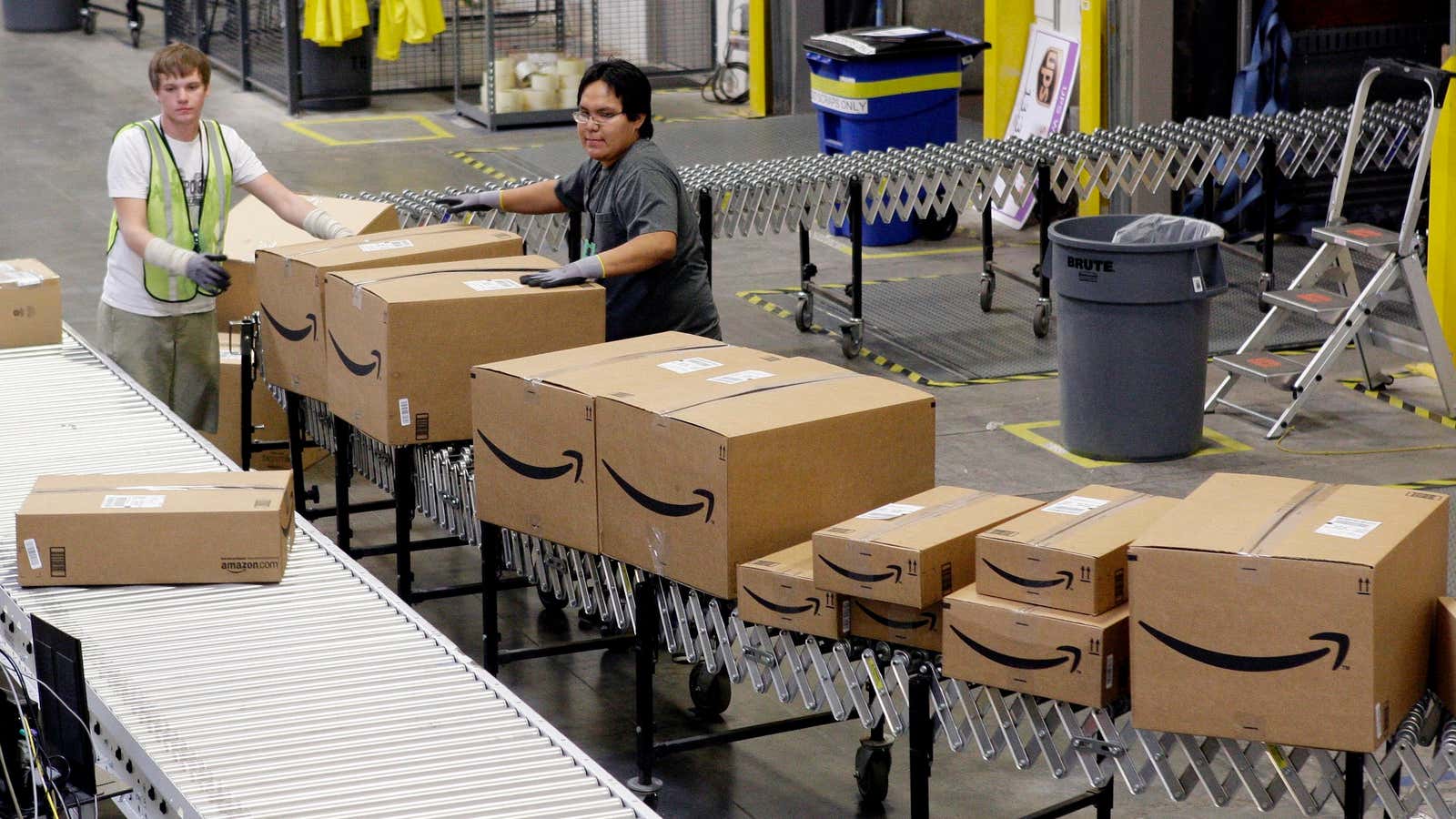One of Amazon’s most valuable assets is Prime, a $99 annual subscription service that includes express shipping and digital media streaming. Amazon, a notoriously opaque company, doesn’t disclose how many Prime subscribers it has. (“Tens of millions” worldwide, it said last month, referring to its 2013 base.) But here are a few estimates, courtesy Ben Schachter, an analyst at Macquarie Securities.
- About 30 million US households subscribed to Prime last year, roughly 20-25% the total, Schachter estimates in a research report today. For context, Comcast, the largest US cable company, finished last year with about 22 million TV subscribers. Netflix, meanwhile, had 39 million US streaming subscribers.
- Prime membership is growing fast. “The most important number that we heard anywhere in the last 12 months is 53%,” Schachter writes. That’s the growth of worldwide, paid Prime memberships in 2014, which Amazon reported last month in its fourth-quarter earnings release. Schachter estimates there are around 40 million Prime subscribers globally.
- Prime membership could soon cover half of US households. Assuming an average annual growth rate around 12%, Schachter estimates that “40%-52% of US households will be Prime members” by 2020—almost 70 million subscriptions on the high end.
Why does Prime matter? Study after study has shown Prime members to be Amazon’s best customers, spending almost twice as much as other Amazon shoppers. Beyond the subscription revenue itself, the real value is the ability to sell people more merchandise and continue growing the Amazon “bundle.”
“Imagine a Prime offering that included an [Amazon] phone with bundled minutes, data, apps from the Amazon App Store, and all the other current Prime offerings,” Schachter hypothesizes—just one of many potential services Amazon could eventually offer with Prime.
